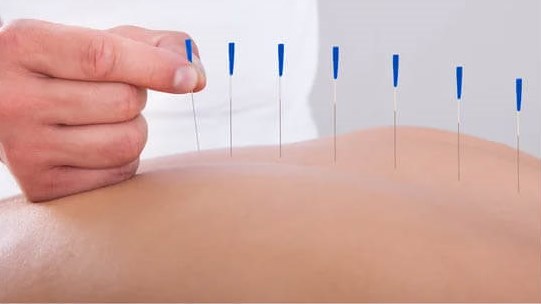Better than a Needle in a Haystack: The Diversity of Acupuncture Therapy
&srotate=0)
What is Acupuncture?
For those dealing with chronic pain, there are alternate solutions to managing pain in a natural way that may help to prevent a dependence on medications or delay invasive surgeries. Acupuncture is one such solution that can be applied to various forms of chronic pain.
Acupuncture is a form of alternative medicine where thin, metallic needles are placed into the skin and then activated through gentle and specific movements of the practitioner's hands, or sometimes even electrical stimulation. This alternative therapy is most commonly used to treat pain. It has also been used to maintain overall wellness through the reduction of stress and activation of your parasympathetic nervous system (also known as your ‘rest and digest’ mode).
Acupuncture is a key part of traditional Chinese medicine and was first introduced in America in 1971 when journalist James Reston wrote about his acupuncture experience in China. Traditional Chinese medicine describes acupuncture as a technique for balancing the flow of energy (known as a chi) that is believed to flow through pathways (known as meridians) in your body. The flow of energy is responsible for the body’s health so any disruption to the pathway can cause diseases. The insertion of needles into specific areas of the pathways in your body allows the energy flow to balance.
How Does Acupuncture Work? What Does it Treat?
Acupuncture is used in a medical context to relieve discomfort or pain associated with a variety of diseases or conditions. These include, but are not limited to, dental pain, headaches, lower back pain, labor pain, neck pain, menstrual cramps, and osteoarthritis. The needles are almost as thin as hair, so the placing of needles feels like a tiny prick, if anything at all. Acupuncture points are believed to stimulate the release of healing agents, endorphins, and other hormones in various parts of the body, thereby stimulating natural healing and pain-relief. When the needles are inserted into specific nerve clusters, it can also help to relieve built-up tension and pressure, as well as regulate the function of nerve endings and minimize the extent to which the body experiences localized pain.
Acupuncture is most commonly used to treat chronic pain in arthritis and alleviate pain of the lower back, back of knees, hips, hands, and feet. Studies have shown that acupuncture has proven to decrease pain over time in patients with chronic conditions. It also serves as a more natural and holistic way to ease pain than taking prescribed medications or undergoing more complex and invasive procedures. It is even used to aid in controlling the symptoms of chemotherapy, like nausea and fatigue.
Better than Finding a Needle in a Haystack
The risks of acupuncture are very low if you visit a certified and competent acupuncture practitioner using sterile needles. The side effects may include soreness and minor bruising in the areas where the needles were inserted. The chance of infection is extremely low because the needles are sterile and single use.
To see the best results with acupuncture, regular attendance of sessions may be required to promote cumulative benefits and continued activation of your body’s natural healing processes. Short term relief can typically be expected following a session, but long-term relief will more likely be seen after consistent appointments. Acupuncture therapy can be a great way of improving your overall health and reducing stress by keeping your body’s pathways in order.
Written By: Tahany Moosa
Edited By: Camden Rowe